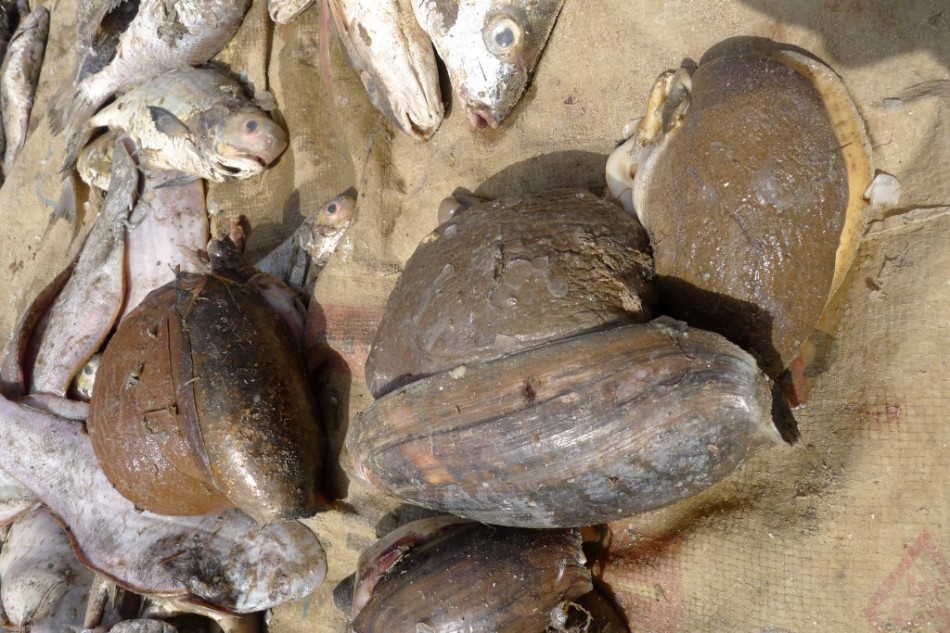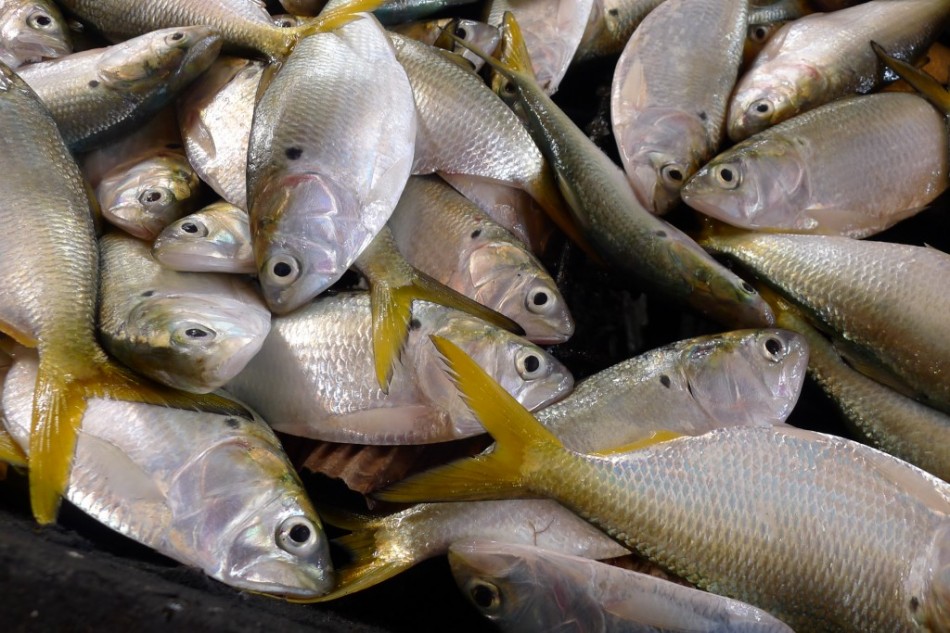In the latest installment of my reports form West Africa, I visit my first fishing communities and meet some big ugly molluscs…
For the past few days I’ve been paying my first visits to fishing communities here in the Gambia. I’ve met and chatted with my first fishermen; I’ve seen baskets of fish being pulled from the sea and balanced on the heads of young Ghanaian men who run up the beach to waiting traders, little kids following behind grabbing any stray fish that fall out; I’ve watched women preparing and smoking fish in dilapidated smoking houses that are more sky than roof; there have been piles of tiny baby sting rays and shovel nosed rays and the ugliest, fattest marine molluscs I’ve ever seen.
It’s been a fascinating and at times stinky introduction to West African fishing life (I’d forgotten how pungent fish can be). This is part of the world I’ve been hearing more and more about in recent years as European media and environmental campaigners have shone an increasingly sharp spotlight on industrial trawling taking place along the coast and the impacts it’s having on fish stocks and local livelihoods (have a read, for example, of John Vidal’s recent reporting for the Guardian from Senegal). While I’m in the region, I plan to spend time finding out more about the artisanal fisheries here and in particular the efforts that are underway in the Gambia to make things better.
At first glance, life in the fishing communities along the coast seems fairly tranquil. Iconic, colourful wooden painted boats are pulled up on the sand, flags flipping vigorously in the offshore breeze that’s keeping all of us cool. Discarded fishy scraps along the strandline make for seagull heaven. Closing my eyes, their perpetual squawking transports me immediately to a British seaside. Open them again and I’m back in the Gambia among tangles of fishnets, with groups of women sat in the shade sorting piles of fish, scraping off scales and pulling insides out, men mending nets, kids playing in the sand.
But it doesn’t take long for the first mention, unprompted by me, of the problem of trawlers. I’ve heard it said so many times, read so many reports, seen so many pictures. The governments take payments from foreign fishing fleets, including many from Europe, to enter their waters and take their fish. They are supposed to stay offshore, but they don’t – at night they switch off their lights and venture close to the coast, to the waters they know have more fish: spawning, young, abundant fish. While they’re there, they don’t only take illegal fish but they trawl through local fishermen’s nets.
Suddenly this story means a whole lot more to me the first time I hear it firsthand, from a fisherman who has lost his nets (him and twenty others the night before).
“No-one even knows how many fish we have to give away,”
he told me.
And there should be a heck of a lot of fish. These are some of the most productive seas on the planet, fed by nutrient-rich waters that get sucked up from the depths by the swirling winds of the Canary Current (they call this the Sahelian Upwelling Marine Ecoregion). But with the timeworn story of more fishermen – local and foreign – scrambling to exploit these rich waters, there are fewer and fewer fish to go round.

Some of those big old ugly molluscs…

Leave a Reply